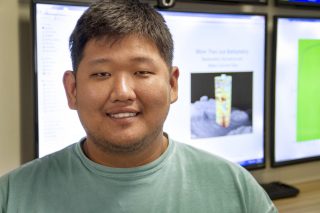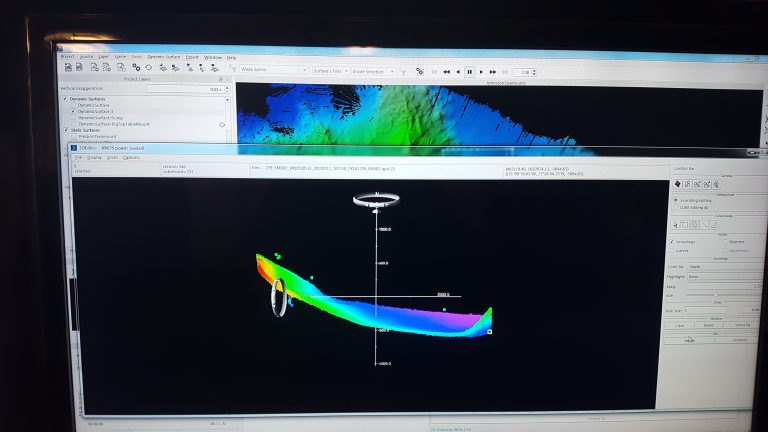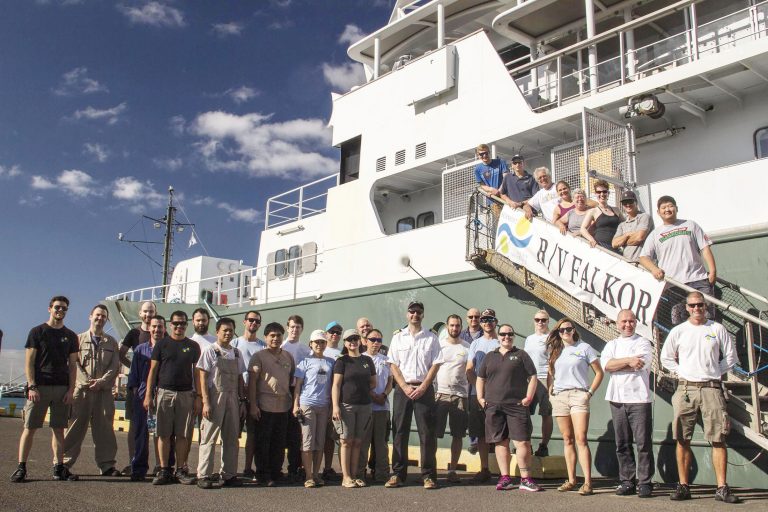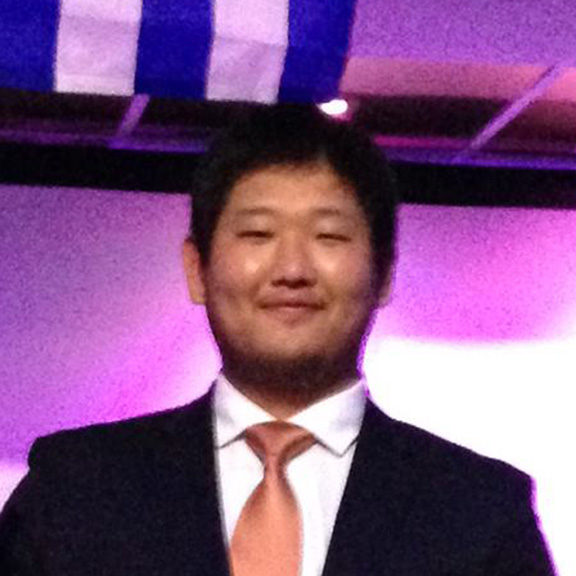
Even as an early career scientist, I have learned that things seldom go as planned. Unforeseen obstacles, despite the stress, make science refreshingly exciting, interesting, and sometimes result in unexpected (important) discoveries. As scientists, it is crucial to prevent these issues from affecting us adversely, and to remain positive and focused on the task at hand. On this cruise, the multibeam echosounder that had been recording clean data without error for 11 days began to pick up interference in the water column as we approached our survey site. Additionally, the magnetometer that was functioning properly, prior to departure, experienced transmission issues without warning. Despite these challenges, we were able to troubleshoot these issues with the collaborative effort of the science team, the marine technicians, and the bridge crew to continue mapping seamounts near Johnston Atoll.
Challenges At Sea
The echosounder worked, without major issues, throughout the transit to the survey site. We did not experience much interference in the water column and bad data points in the raw sonar data were minimal. We began to pick up significant interference in the water column monitor as the survey site came into focus on our real-time screen in the science control room. Interference causes us to lose clean data because the noise decreases the intensity of sound waves traveling down to the seafloor. To deal with the issue, Lead Marine Technician Colleen Peters coordinated with the bridge to turn off any other active sonars and reduce ship noise. She also adjusted the multibeam processing software settings to filter out erroneous data from the good data points.

Another challenge was the transmission of magnetics data from the magnetometer. During the initial test run, the magnetometer was transmitting data to the program without major issues. However, we began to lose the flow of magnetics data into the computer. This prompted the marine technicians to identify the source of the problem. After half-an-hour of troubleshooting, they were able to isolate the source to a faulty connection in the transmission cable. After the marine technicians replaced the cable, the magnetics data returned to entering the system without a problem.
Shoreside
Equipment issues can be fixed on board, but some technical difficulties are out of our control. On a ship-to-shore outreach opportunity with a winter program at a community college back in Guam, the shoreside connection went bad. I was very excited when I was creating the presentation to share research we had been doing as well as data that was being processed, however, it was not to be as the community college experienced issues with their internet connection, so we were unable to make the outreach call. I made up for the missed opportunity by scheduling and leading another ship-to-shore call in Guam with high school students, as well as participating in and contributing to other outreach calls made by members of the science team. It was very rewarding to see the enthusiasm of the students during the ship-to-shore video call.
All in all, I’m having a really great time working with together with the crew and science team throughout the survey. We have been very effective at working together to overcome the challenges and ensure that the science goes on as smoothly as possible. Conducting research at sea is hard because the equipment and technology seems to cause issues at the most inopportune moments, but having the collective effort of the Falkor crew and science team pretty much guarantees that the job will get done. I can attribute our success to the positive attitude, resourcefulness, patience, and creativity that everyone possesses on board the R/V Falkor.


